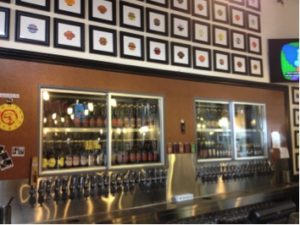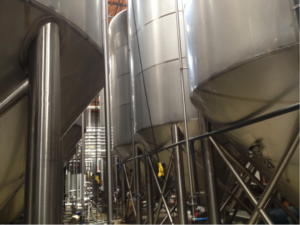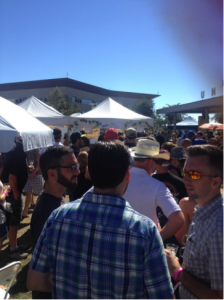
Editor’s Note: This sponsored column is written by Nick Anderson, beermonger at Arrowine (4508 Lee Highway).
Before we get into it today, some notes:
Homebrew Update: My Brooklyn Brew Shop Everyday IPA has been in bottles carbonating for just over a week now. Bottling wasn’t so bad, but I don’t know how much I’d enjoy doing it on a regular basis with larger batches of beer. They’ll be going into my fridge next Thursday night for consumption starting Friday — if I stay patient. If not, well, you’ll be getting a report on the results sooner than anticipated. Either way, I’m already plotting a Porter or Stout brew next.
Articles of note: The increasingly must-read Craft Brewing Business has a great piece up about distribution contracts. CBB’s Candace Moon lays out the intricacies, fine print, and pitfalls of the legalese involved in the alcohol industry in a way that is accessible without being dumbed-down.
Also, check out Esquire picking up on Dann Paquette of Pretty Things going H.A.M. (look it up, kids) on “pay to play” practices in Boston. Paquette started calling out breweries, distributors, and bars/restaurants for engaging in illegal payments/gifting in exchange for securing tap lines, and revived an ages-old, extremely contentious running argument in the process. If you’re a Beer Advocate member, there’s a refreshingly reasonable and open forum thread on the topic that makes for great reading.
Onto the topic this week: The truth is, this is my second pass at this week’s column. Earlier in the week I’d been reading everything from the stuff I linked above, along with a great piece by Craig Gravina at DrinkDrank that addressed some of the concerns being raised about quality control in new breweries; whether drinking “local” would actually harm the growing beer industry.
I’ve been seeing some of the planned releases and strategies from so-called Big Craft breweries for 2015; taken as a whole, I just rambled about reconciling the business aspect of beer with the very passion we have for it as fans. What came out was, frankly, depressing; no one here wants to read about me being a sad panda.
I wanted to get to the heart of what I was trying to say — get to the point. Then a couple funny things happened: I tried a couple standout beers, and a lot of media outlets started talking about beer. First up was the New York Times Editorial Board itself, weighing in with concerns over the potential AB/InBev and SABMiller merger that’s been on again/off again for years now. Then chef David Chang took an oddly emphatic swing at what he derisively terms “fancy beer” in GQ, and something in my brain went “pop.”
I stopped being able to be “outraged” or whatever it is I’m supposed to feel when my hobby (and my profession) is being “attacked.” Looking at it one way, Chang pulls off an impressive troll job, judging by the online reaction to the column. Beyond that, however, is the fact that this is simply one man’s opinion: Chang isn’t limiting the beer options in his restaurants; you’ll find offerings like Stillwater Stateside Saison, Left Hand Good Juju, Fritz Briem Berlinerweisse, and Rodenbach — he’s even done a collaboration beer with Evil Twin. The guy’s just expressing a preference; the only issue I’d take is with the “neckbeard” and “hipster” cracks, which just strike me as unnecessarily antagonistic, but then again, it gets the clicks. (more…)



 I spent last week on vacation visiting my best friend in Los Angeles. When we were planning this trip, I checked in with my friends at Stone Brewing Company
I spent last week on vacation visiting my best friend in Los Angeles. When we were planning this trip, I checked in with my friends at Stone Brewing Company